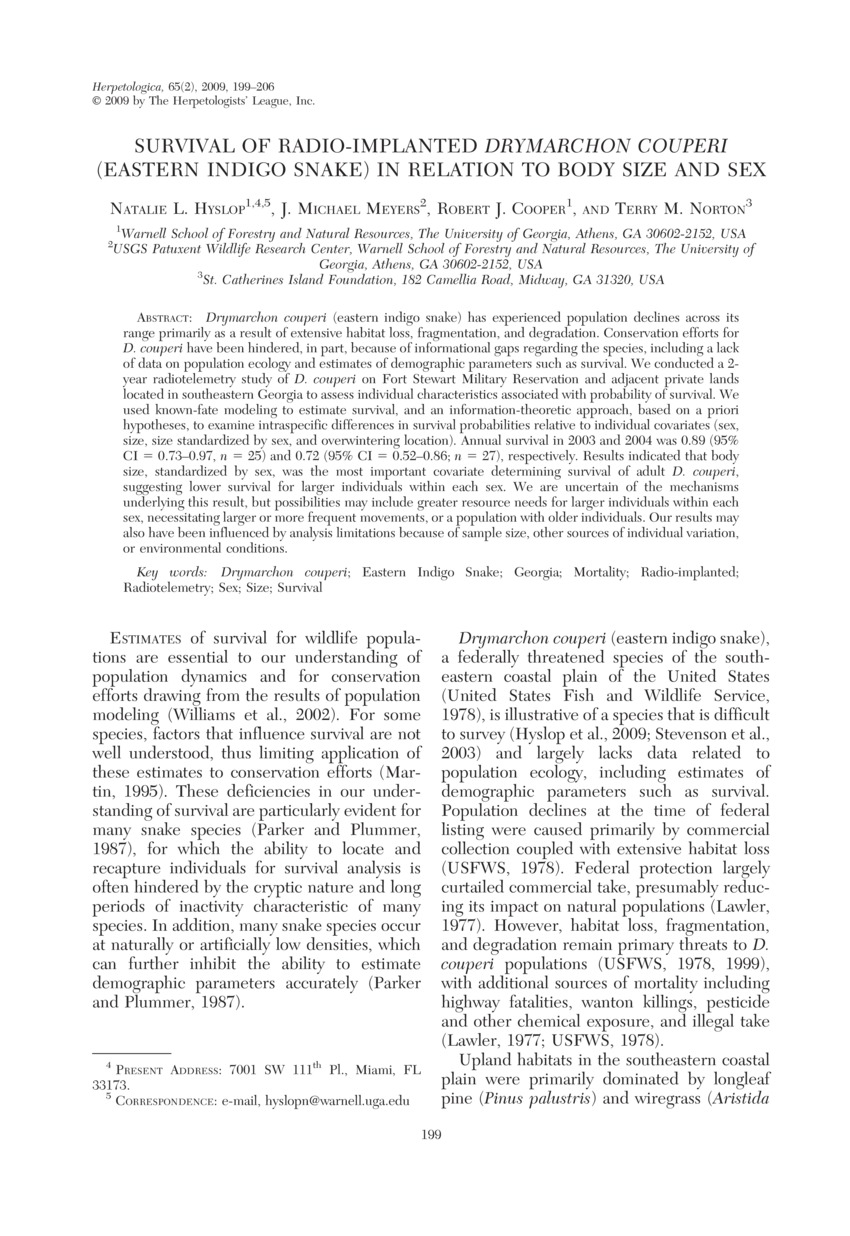Journal Article
AccessSurvival of Radio-Implanted Drymarchon Couperi (Eastern Indigo Snake) in Relation to Body Size and Sex
Drymarchon couperi (eastern indigo snake) has experienced population declines across its range primarily as a result of extensive habitat loss, fragmentation, and degradation. Conservation efforts for D. couperi have been hindered, in part, because of informational gaps regarding the species, including a lack of data on population ecology and estimates of demographic parameters such as survival. We conducted a 2-year radiotelemetry study of D. couperi on Fort Stewart Military Reservation and adjacent private lands located in southeastern Georgia to assess individual characteristics associated with probability of survival. We used known-fate modeling to estimate survival, and an information-theoretic approach, based on a priori hypotheses, to examine intraspecific differences in survival probabilities relative to individual covariates (sex, size, size standardized by sex, and overwintering location). Annual survival in 2003 and 2004 was 0.89 (95% CI = 0.73–0.97, n = 25) and 0.72 (95% CI = 0.52–0.86; n = 27), respectively. Results indicated that body size, standardized by sex, was the most important covariate determining survival of adult D. couperi, suggesting lower survival for larger individuals within each sex. We are uncertain of the mechanisms underlying this result, but possibilities may include greater resource needs for larger individuals within each sex, necessitating larger or more frequent movements, or a population with older individuals. Our results may also have been influenced by analysis limitations because of sample size, other sources of individual variation, or environmental conditions.
Publisher - BioOne
Subjects - Reptile, Indigo Snake, Drymarchon couperi
Citation: Hyslop NL, Meyers JM, Cooper RJ, Morton TM. 2009. Survival of Radio-Implanted Drymarchon Couperi (Eastern Indigo Snake) in Relation to Body Size and Sex Herpetologica; 65(2):199-206 http://dx.doi.org/10.1655/08-004R1.1
